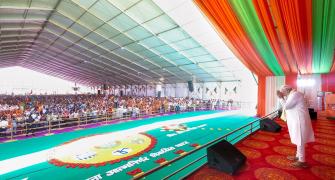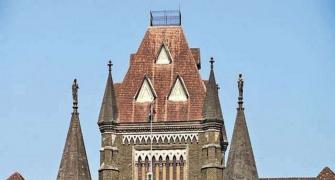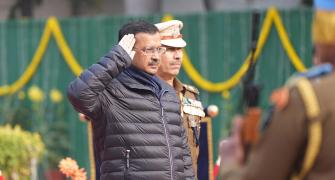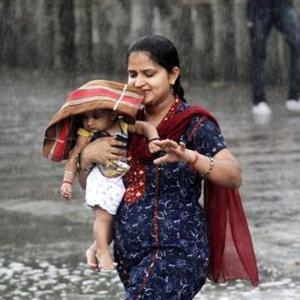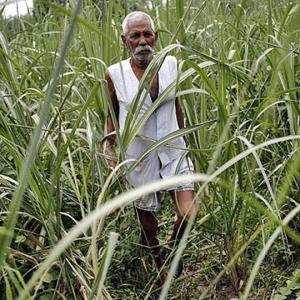This season, the cumulative rain deficiency between June 1 and August 24 is 18 per cent at the all-India level, and above 20 per cent in nearly 45 per cent of the total area. 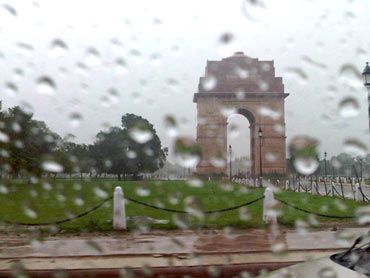 The performance of the monsoon so far this year is odd in several respects.
The performance of the monsoon so far this year is odd in several respects.
The total rainfall till now is not only deficient, but is also erratic in terms of both geographical spread and timings.
However, there is not much concern over its economic fallout.
Going by the India Meteorological Department website, if the rainfall deficit exceeds 10 per cent in 20 to 40 per cent of the country’s geographical area, it can be dubbed as drought.
This season, the cumulative rain deficiency between June 1 and August 24 is 18 per cent at the all-India level, and above 20 per cent in nearly 45 per cent of the total area.
Yet none of the states -- not even the states having 30 to 60 per cent rainfall shortage -- has officially declared a drought.
The reasons for this are many.
First, most of the rain-starved regions happen to be well-irrigated. These include Punjab, Haryana, western Uttar Pradesh and parts of Gujarat, among others.
The crop loss, which entitles them for central drought assistance, may not be substantial.
Secondly, the water stock in the country’s major reservoirs is fairly comfortable -- marginally above normal for this time of the year -- thanks to good rainfall in their catchment area.
However, this masks the fact that the overall hydrological balance may be adversely hit.
There has hardly been any accretion to groundwater reserves in nearly half of the country, and total withdrawals from the surface water systems are set to exceed inflows.
India seems to be seeing a meteorological and hydrological drought, but not a typical agricultural drought.
Thirdly, launching of employment generation schemes, one of the main drought-relief activities, is taken care of by the ongoing Mahatma Gandhi National Rural Employment Guarantee Programme.
And fourthly, the Centre has already announced a subsidy on diesel in rain-deficient farm belts even without any declaration of drought.
The agricultural situation as of now, which matters for gross domestic product numbers, is that the production of main crops, such as paddy, sugarcane, cotton and pulses, may not dip substantially.
However, output loss will be sizeable in rain-dependent crops, such as coarse cereals, oilseeds and some other minor produce.
The overall impact on the GDP may be marginal.
Besides, the monsoon’s behaviour this year seems to bear out the notion that climate change is affecting the Indian monsoon and altering its rainfall calendar.
The first half of the four-month monsoon season (June to September) seems to be turning drier. In seven of the last 10 years, June and July have seen below-normal rainfall.
Major rainy spells are getting pushed to August-September and, at times, even to October.
Withdrawal of the monsoon, too, is tending to get delayed.
The fact also is that the impact of a drought-like situation is normally felt in the subsequent summer -- chiefly in the form of shortage of drinking water and fodder.
The prices of feed and fodder are already high; these may spike further in the next summer.
Consequently, livestock products, such as milk, meat, eggs and fish, may turn costlier, pushing up food inflation to uncomfortable levels.
There is, therefore, an urgent need to encourage production and preservation of fodder, especially in areas where the rainfall is too low for regular crops.
Otherwise, prices of non-cereal food may be hard to tame.
Image: India Gate, New Delhi


